A Look at Historic Grinnell in Grinnell
Photos Courtesy of the Grinnell College Archives except where noted
For 150 years, the community of Grinnell and Grinnell College have grown and thrived, side by side, sharing a name as well as a beloved place. The Grinnell College Archives provided this photo slideshow, offering a look back at where we've been.
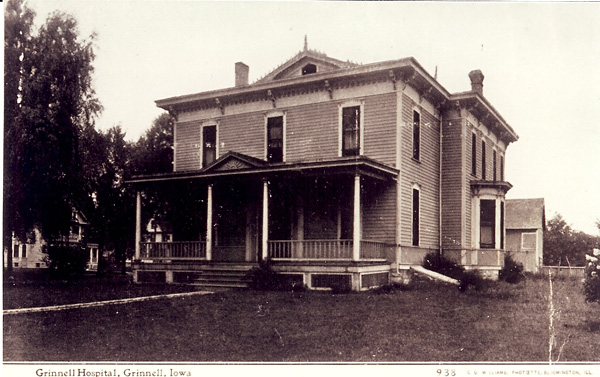
- Grinnell’s second hospital was located in this house on the corner of Sixth Avenue and Elm Street. It has now been restored.
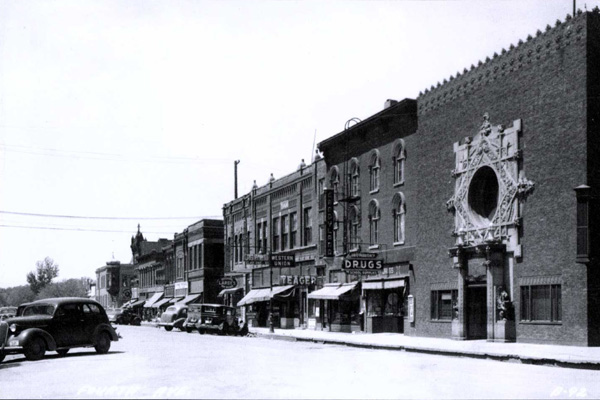
- The view looking west on Fourth Street, with the Merchants’ National Bank on the right (designed by renowned architect Louis H. Sullivan in 1913) and the Candyland, a popular student hangout, just up the street.
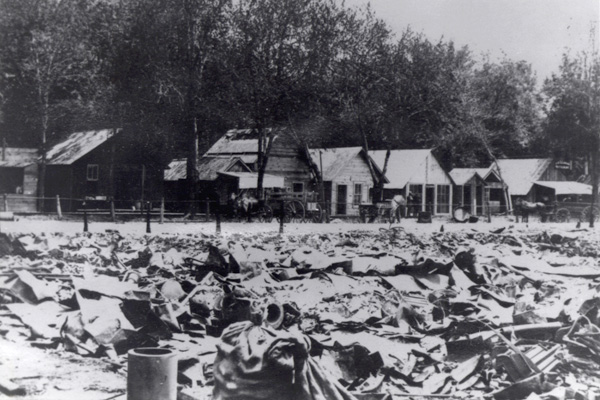
- Central Park after the 1889 fire, which devastated a section of downtown bounded by Main and Broad Streets and Fourth Avenue and the Rock Island Railroad tracks. Visible in the photo are the temporary huts of the downtown merchants who were displaced by the fire.
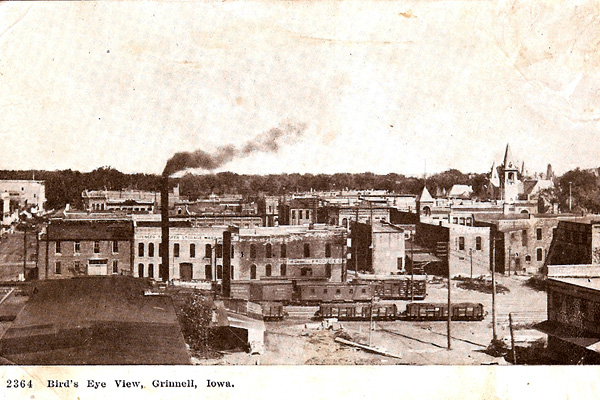
- This postcard offers a bird’s eye view of Commercial Street in Grinnell.
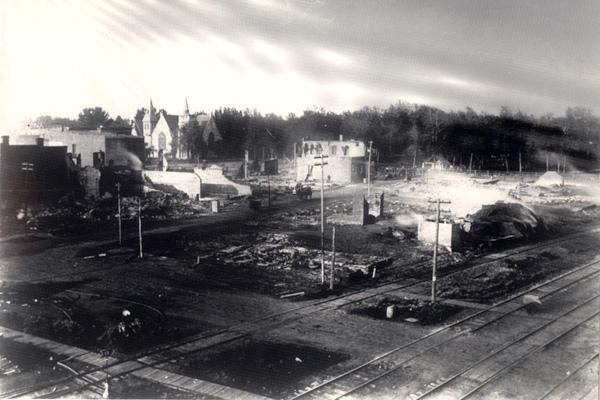
- The devastation of the Congregational Church after the 1889 fire ravaged Grinnell.
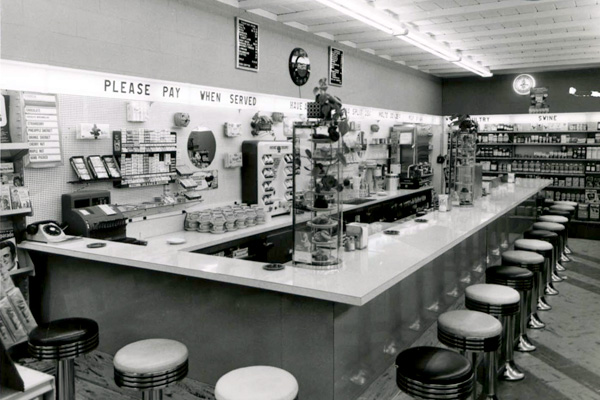
- Generations of Grinnellians found a warm welcome and sweet treats at Cunningham’s Soda Fountain, shown here in January 1956.
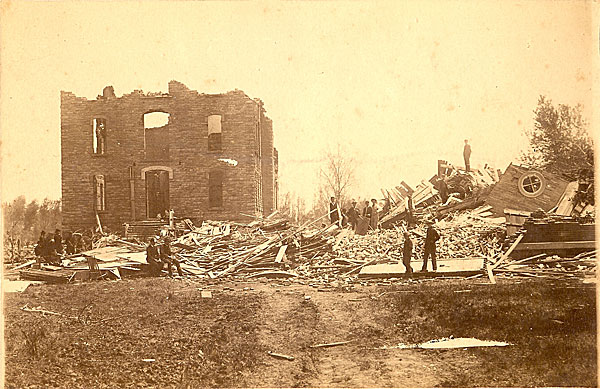
- Just before Commencement in 1882, a cyclone killed two students and destroyed the College’s two buildings. The Rev. David O. Mears, who was in Grinnell to deliver the Commencement address, later wrote: “There was a fearful terror of blackness and the deadly roar -- and all was still as if the shrill whistling train of death were passed. There was only death and ruin left in its track.”
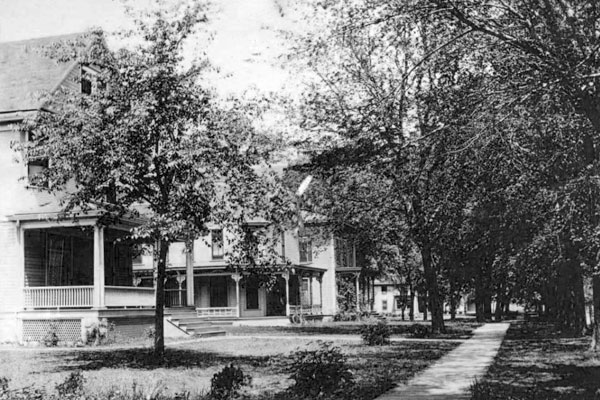
- Grinnell, circa 1899, with large homes on the west side of High Street, between Fourth and Fifth Avenues.
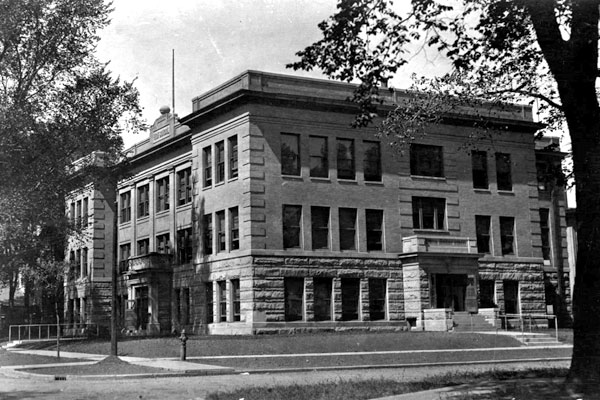
- The imposing edifice of the Grinnell Junior High School seems to reflect the seriousness with which the community regards education. The building is now the Community Center downtown, across from Central Park.
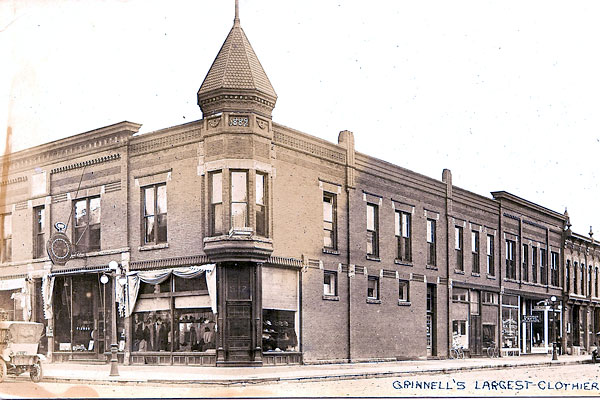
- Grinnell’s largest clothier occupied a choice storefront at the corner of Fourth Avenue and Main Street in downtown Grinnell.
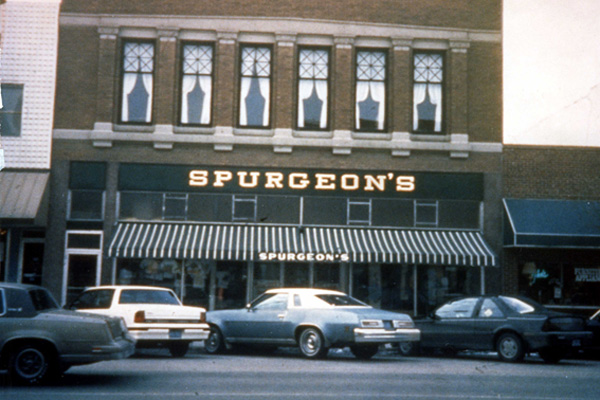
- Spurgeon’s Department Store was for many years a staple for shoppers in downtown Grinnell. The building is now the home of Grinnell Home Decorating.
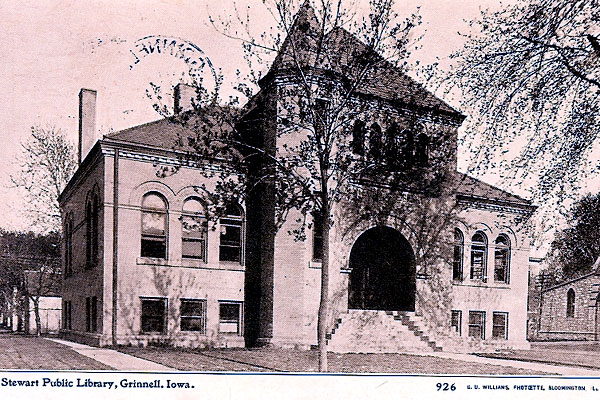
- Stewart Public Library on Broad Street as it looked in 1912. Funded by Joel Stewart, the library had seen just over a decade of service when this photo was taken.
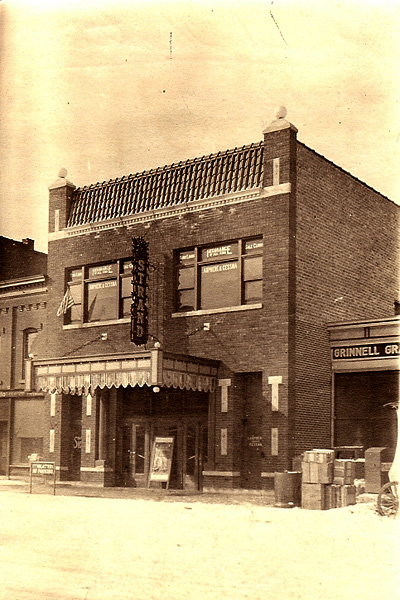
- The original Strand Theatre opened in Grinnell in 1916 at 921 Main Street, which is today the site of the recently restored and refurbished movie theatre of the same name.
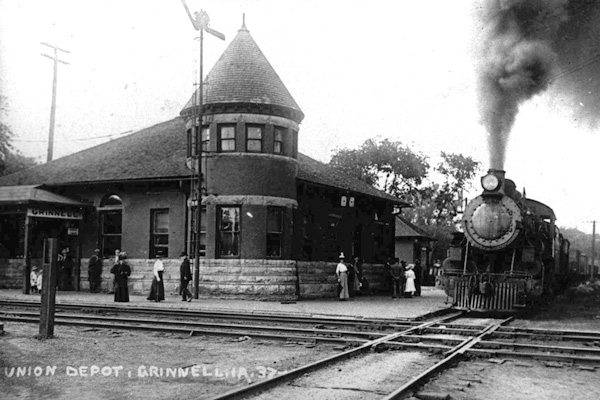
- Two rail lines intersect at Grinnell’s Union Depot, the Chicago Rock Island and the Central Railroad of Iowa. The depot opened in 1893 and served as a hub for passenger rail service until the early 1980s.
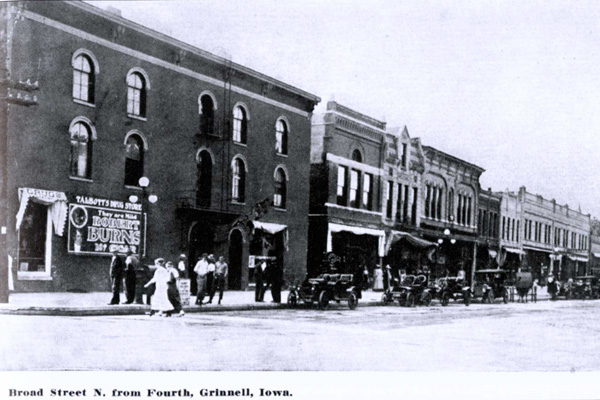
- The west side of Broad Street as it appeared prior to the construction of the Merchants National Bank. (Postcard courtesy of Mickey Munley ’87)
